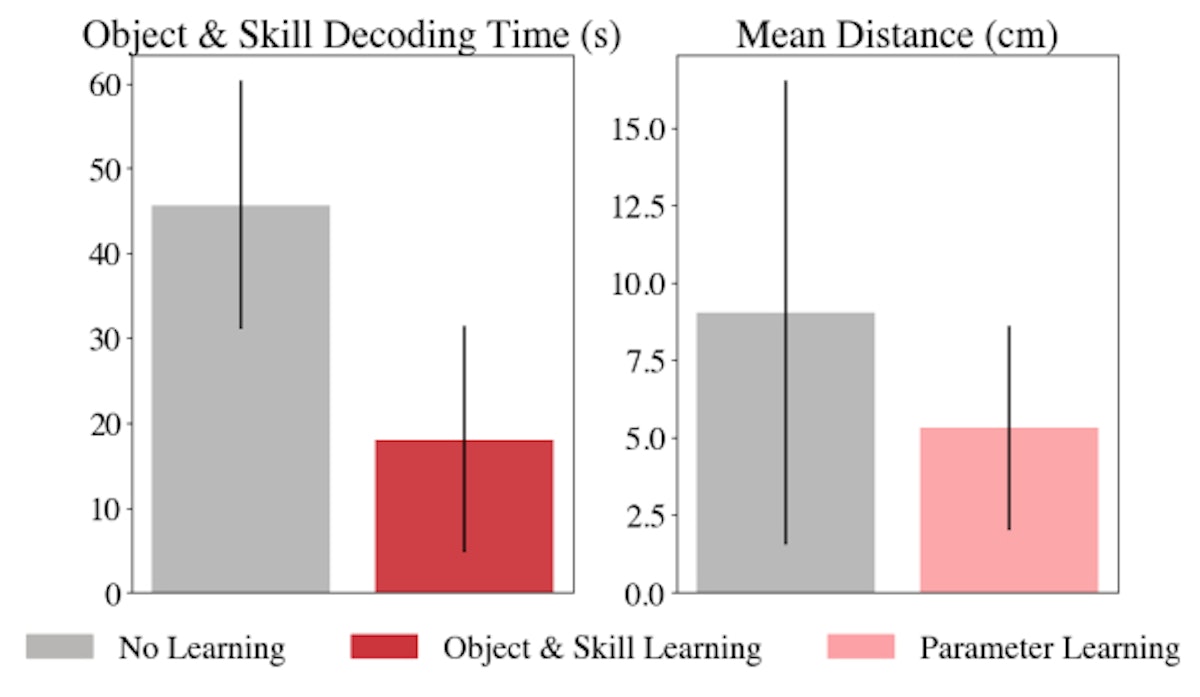

Neural Signal Operated Intelligent Robots: Conclusion, Limitations, & Ethica...
source link: https://hackernoon.com/neural-signal-operated-intelligent-robots-conclusion-limitations-and-ethical-concerns
Go to the source link to view the article. You can view the picture content, updated content and better typesetting reading experience. If the link is broken, please click the button below to view the snapshot at that time.

Neural Signal Operated Intelligent Robots: Conclusion, Limitations, & Ethical Concerns
Neural Signal Operated Intelligent Robots: Conclusion, Limitations, & Ethical Concerns
2min
by @escholar
EScholar: Electronic Academic Papers for Scholars
@escholar
We publish the best academic work (that's too often lost...
Too Long; Didn't Read
NOIR presents a groundbreaking BRI system enabling humans to control robots for real-world activities, but also raises concerns about decoding speed limitations and ethical risks. While challenges remain in skill library development, NOIR's potential in assistive technology and collaborative interaction signifies a significant step forward in human-robot collaboration.People Mentioned
Shreya Gupta
@gshreyaa

audio element.@escholar
EScholar: Electronic Academic Papers for ScholarsWe publish the best academic work (that's too often lost to peer reviews & the TA's desk) to the global tech community
Receive Stories from @escholar
Authors:
(1) Ruohan Zhang, Department of Computer Science, Stanford University, Institute for Human-Centered AI (HAI), Stanford University & Equally contributed; [email protected];
(2) Sharon Lee, Department of Computer Science, Stanford University & Equally contributed; [email protected];
(3) Minjune Hwang, Department of Computer Science, Stanford University & Equally contributed; [email protected];
(4) Ayano Hiranaka, Department of Mechanical Engineering, Stanford University & Equally contributed; [email protected];
(5) Chen Wang, Department of Computer Science, Stanford University;
(6) Wensi Ai, Department of Computer Science, Stanford University;
(7) Jin Jie Ryan Tan, Department of Computer Science, Stanford University;
(8) Shreya Gupta, Department of Computer Science, Stanford University;
(9) Yilun Hao, Department of Computer Science, Stanford University;
(10) Ruohan Gao, Department of Computer Science, Stanford University;
(11) Anthony Norcia, Department of Psychology, Stanford University
(12) Li Fei-Fei, 1Department of Computer Science, Stanford University & Institute for Human-Centered AI (HAI), Stanford University;
(13) Jiajun Wu, Department of Computer Science, Stanford University & Institute for Human-Centered AI (HAI), Stanford University.
Table of Links
Brain-Robot Interface (BRI): Background
Conclusion, Limitations, and Ethical Concerns
Appendix 1: Questions and Answers about NOIR
Appendix 2: Comparison between Different Brain Recording Devices
Appendix 5: Experimental Procedure
Appendix 6: Decoding Algorithms Details
Appendix 7: Robot Learning Algorithm Details
6 Conclusion, Limitations, and Ethical Concerns
In this work, we presented a general-purpose, intelligent BRI system that allows human users to control a robot to accomplish a diverse, challenging set of real-world activities using brain signals. NOIR enables human intention prediction through few-shot learning, thereby facilitating a more efficient collaborative interaction. NOIR holds a significant potential to augment human capabilities and enable critical assistive technology for individuals who require everyday support.
NOIR represents a pioneering effort in the field, unveiling potential opportunities while simultaneously raising questions about its limitations and potential ethical risks which we address in Appendix 1. The decoding speed, as it currently stands, restricts tasks to those devoid of time-sensitive interactions. However, advancements in the field of neural signal decoding hold promise for alleviating this concern. Furthermore, the compilation of a comprehensive library of primitive skills presents a long-term challenge in robotics, necessitating additional exploration and development. Nonetheless, we maintain that once a robust set of skills is successfully established, human users will indeed be capable of applying these existing skills to complete new tasks.
This paper is available on arxiv under CC 4.0 license.
Recommend
About Joyk
Aggregate valuable and interesting links.
Joyk means Joy of geeK